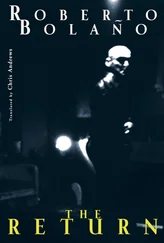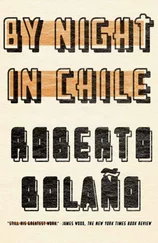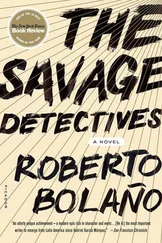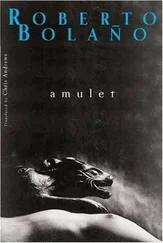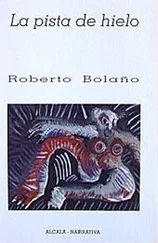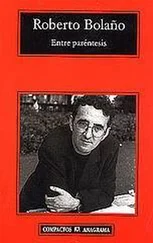Roberto Bolaño - Between Parentheses - Essays, Articles and Speeches, 1998-2003
Здесь есть возможность читать онлайн «Roberto Bolaño - Between Parentheses - Essays, Articles and Speeches, 1998-2003» весь текст электронной книги совершенно бесплатно (целиком полную версию без сокращений). В некоторых случаях можно слушать аудио, скачать через торрент в формате fb2 и присутствует краткое содержание. Год выпуска: 2011, Издательство: New Directions, Жанр: Публицистика, Критика, на английском языке. Описание произведения, (предисловие) а так же отзывы посетителей доступны на портале библиотеки ЛибКат.
- Название:Between Parentheses: Essays, Articles and Speeches, 1998-2003
- Автор:
- Издательство:New Directions
- Жанр:
- Год:2011
- ISBN:нет данных
- Рейтинг книги:4 / 5. Голосов: 1
-
Избранное:Добавить в избранное
- Отзывы:
-
Ваша оценка:
- 80
- 1
- 2
- 3
- 4
- 5
Between Parentheses: Essays, Articles and Speeches, 1998-2003: краткое содержание, описание и аннотация
Предлагаем к чтению аннотацию, описание, краткое содержание или предисловие (зависит от того, что написал сам автор книги «Between Parentheses: Essays, Articles and Speeches, 1998-2003»). Если вы не нашли необходимую информацию о книге — напишите в комментариях, мы постараемся отыскать её.
The Savage Detectives
Between Parenthese
Between Parentheses: Essays, Articles and Speeches, 1998-2003 — читать онлайн бесплатно полную книгу (весь текст) целиком
Ниже представлен текст книги, разбитый по страницам. Система сохранения места последней прочитанной страницы, позволяет с удобством читать онлайн бесплатно книгу «Between Parentheses: Essays, Articles and Speeches, 1998-2003», без необходимости каждый раз заново искать на чём Вы остановились. Поставьте закладку, и сможете в любой момент перейти на страницу, на которой закончили чтение.
Интервал:
Закладка:
OSVALDO LAMBORGHINI: MARTYR
There are books that inspire fear. Real fear. More than books they seem like time bombs or like taxidermied animals that’ll go for your throat when you’re not looking. This is a fear I’ve known only twice. The first time was long ago, in 1977 or 1978; I was reading a novella in which, on a certain page, the reader is warned that he could die at any moment. That is, he could die literally, fall to the floor and not get up. The novella was La asesina ilustrada [The Enlightened Assassin] by Enrique Vila-Matas, and as far as I know none of its readers died on the spot although many of us emerged transformed from our reading of it, conscious that something had changed forever in our relationship with literature. Along with Los dominios del lobo [The Wolf’s Haunts], Javier Marías’s first novel, La asesina ilustrada, marks the departure point for our generation.
The second novel that’s truly frightened me (and this time the fear is much stronger, because it involves pain and humiliation instead of death) is Tadeys , the posthumous novel by Osvaldo Lamborghini. There is no crueller book. I started to read it with enthusiasm — an enthusiasm heightened by Lamborghini’s original prose (with its sentences like something out of Flemish painting and a kind of improbable Argentine or Central European pop art) and guided as well by my admiration for César Aira, Lamborghini’s disciple and literary executor as well as the author of the prologue to this unclassifiable novel — and my enthusiasm or innocence as a reader was throttled by the picture of terror that awaited me. There’s no question that it’s the most brutal book (that’s the best adjective I can come up with) that I’ve read in Spanish in this waning century. It’s incredible, a writer’s dream, but it’s impossible to read more than twenty pages at a time, unless one wants to contract an incurable illness. Naturally, I haven’t finished Tadeys , and I’ll probably die without finishing it. But I’m not giving up. Every once in a while I feel brave and I read a page. On exceptional nights I can read two.
SARA AND STEVA
I’ve just read a book, Art i conjuntura [Art and Conjuncture] (Di7 edició), whose subtitle, “La jove plàstica a Mallorca 1970–1978,” [Young Mallorcan Artists 1970–1978] immediately establishes the ground that its author, Jaume Reus Morro, will cover. What ground is this? At first glance, it’s the terrain of nostalgia or the history of art, a discipline that often bears a strong resemblance to entomology, but as the reader turns the pages he finds there’s more to it than that: youth’s long march, its discontents, the fluctuations of taste, the wagers on radicalism that are almost always lost, among other reasons because the odds are winner-take-all and because the young makers of such wagers don’t rig them.
In 1977, when I was new to Barcelona, I met one of those young Mallorcans at a café on the Gran Vía. His name was Steva Terrades and he was a brilliant and radical painter. Also, it goes without saying, he was generous and curious in a way that people could only be generous and curious in those days, in a Barcelona that was the incarnation of utopian spirit. Through him I met Sara Gibert, the only Barcelonan painter of the Mallorcan group Neón de Suro. Sara, tall and thin, unpredictable and capable, with her exacting sense of humor, was the perfect archetype of the woman-mirror or the woman-razor, ungraspable and somewhat lofty.
The two of them, Sara and Steva, introduced me to a world of painters: works by Miquel Barceló, Andreu Terrades (Steva’s twin brother), Cabot, and Mariscal shone, among those by others whose names I’ve forgotten but who are scrupulously memorialized in this book. For me, the happiness of Barcelona, the energy and unhappiness of youth, are linked to them: to their works, their words, cold mornings in District 5, the figure of Lola Paniagua vanishing into the night, the clouds of Baudelaire.
MOSLEY
A little while ago I read the latest novel by Walter Mosley ( Gone Fishin’ , Anagrama), Bill Clinton’s favorite thriller writer and the creator of the detective Easy Rawlins, a black man who isn’t really a detective but simply a black American, or an African-American, as the politically correct would have it, who always has the losing hand and whose story Mosley has told over the course of six novels — two of them great or very close to great — which have so far covered a long stretch of twentieth-century American history, from 1939 to the 1960s, with Easy growing older from novel to novel, and if in the first he’s a World War II veteran, a young black man from Texas who learns to kill whites in Europe, in the latest he’s a man who works hard and has only one real concern, his children. Because Easy Rawlins isn’t really a detective, he’s a smart guy who occasionally solves problems, searches for people who’ve disappeared, tries to clean up small-time messes that inevitably, a few pages in, become matters of life or death, problems that grow until they become unbearable, when the machinery of reality starts up and everything leads the reader to believe that this time Easy won’t make it out alive, among other things because he’s black and poor and there’s no political or religious power behind him, because he’s a man who can only rely on a certain amount of physical strength, decent intelligence, and nothing more. But Easy always finds his way out of the dead ends into which Mosley steers him. Bruised, battered, older and more cynical each time, he still escapes, like the protagonists of Chandler, Hammett, Jim Thompson, or Chester Himes. And his character’s ability to survive is one of the main gifts that Mosley has given us. He’s created the modern stoic. Or in other words, the classic stoic. With Easy Rawlins’s desperate and unflinching vision, he’s revitalized two genres, the hard-boiled novel and the American behaviorist novel.
BORGES AND THE RAVENS
I’m in Geneva and I’m looking for the cemetery where Borges is buried. It’s a cold autumn morning, although to the east there’s a glimpse of sun, a few rays that cheer the citizens of Geneva, a stubborn people of great democratic tradition. The Plainpalais, the cemetery where Borges is buried, is the perfect cemetery: the kind of place to come every afternoon to read a book, sitting across from the grave of some government minister. It’s really more like a park than a cemetery, an extremely manicured park, every inch well-tended. When I ask the keeper about Borges’s grave, he looks down at the ground, nods, and tells me how to find it, not a word wasted. There’s no way to get lost. From what he says it’s clear that visitors are always coming and going. But this morning the cemetery is literally empty. And when I finally reach Borges’s grave there’s no one nearby. I think about Calderón, I think about the English and German Romantics, I think how strange life is, or, rather: I don’t think anything at all. I just look at the grave, the stone inscribed with the name Jorge Luis Borges, the date of his birth, the date of his death, and a line of Old English verse. And then I sit on a bench facing the grave and a raven says something in a croak, a few steps from me. A raven! As if instead of being in Geneva I were in a poem by Poe. Only then do I realize that the cemetery is full of ravens, enormous black ravens that hop up on the gravestones or the branches of the old trees or run through the clipped grass of the Plainpalais. And then I feel like walking, looking at more graves, maybe if I’m lucky I’ll find Calvin’s, and that’s what I do, growing more and more uneasy, with the ravens following me, always keeping within the bounds of the cemetery, although I suppose that one occasionally flies off and goes to stand on the banks of the Rhone or the shores of the lake to watch the swans and ducks, somewhat disdainfully, of course.
Читать дальшеИнтервал:
Закладка:
Похожие книги на «Between Parentheses: Essays, Articles and Speeches, 1998-2003»
Представляем Вашему вниманию похожие книги на «Between Parentheses: Essays, Articles and Speeches, 1998-2003» списком для выбора. Мы отобрали схожую по названию и смыслу литературу в надежде предоставить читателям больше вариантов отыскать новые, интересные, ещё непрочитанные произведения.
Обсуждение, отзывы о книге «Between Parentheses: Essays, Articles and Speeches, 1998-2003» и просто собственные мнения читателей. Оставьте ваши комментарии, напишите, что Вы думаете о произведении, его смысле или главных героях. Укажите что конкретно понравилось, а что нет, и почему Вы так считаете.



